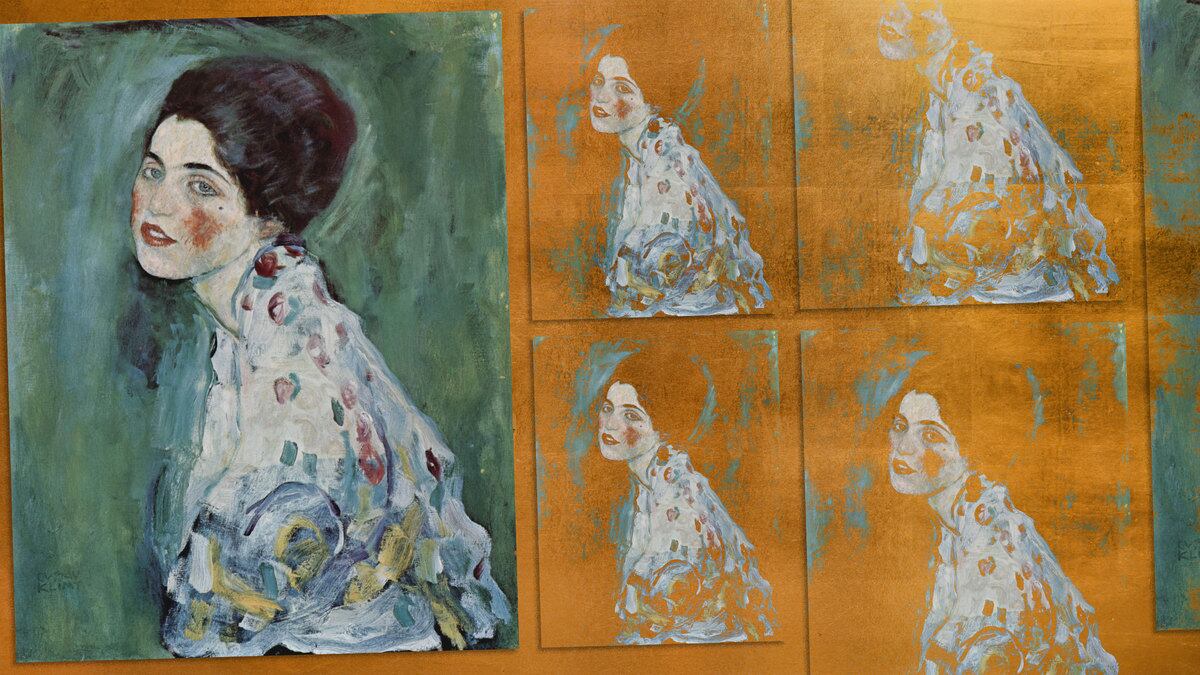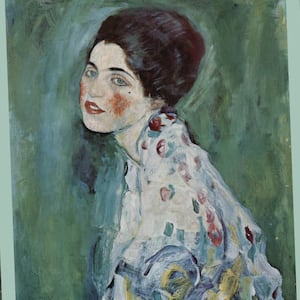ROME—In late 1997, just a few days after thieves allegedly fished Gustav Klimt’s Portrait of a Lady through a skylight just days before it was to be exhibited at the Ricci Oddi Modern Art Gallery, Stefano Fugazza wrote a strange passage in his diary.
The world’s attention was on the little museum Piacenza, Italy, after the audacious heist, and Fugazza, who was curator at the time, clearly needed to put his thoughts in order. “I wondered what could be done to give the exhibition some notoriety, to ensure an audience success like never before,” he wrote in black pen. “And the idea that came to me was to organize, from the inside together with police, a theft of the Klimt, just before the show, for the work to then be rediscovered after the show began.” In parentheses he adds, “Exactly, my God, what happened.”
Fugazza then outlined the various stages of the investigation, essentially a tick-tock of what it was like to wade through the labyrinth of murky bureaucracy that often comes with Italian police investigations. Police say they would have never agreed to a hoax such as Fugazza suggested in his journal. He ended the passage with something that slaloms the line between confession and astonishment. “But now The Lady has gone for good, and damned be the day I even thought of such a foolish and childish thing.”
Throughout the years, the mystery of the painting became an obsession for Ermanno Mariani, who has written a book about the disappearance and has always harbored a suspicion that Fugazza knew more than he let on. “It just can’t be that the thieves acted alone,” he told The Daily Beast. “Whoever took The Lady had free reign inside the museum, that is for sure.”
In early December last year, the $65 million painting was found hidden in a utility box in an exterior wall of the museum. It is not yet clear whether someone tipped a worker to where it might be hidden under a thick growth of ivy.
A month later, in January, guilty thieves wrote to Mariani and confessed in large block print that they had placed it there out of moral duty—and to bargain a lighter sentence on another theft. Mariani turned the letter over to police, who have since questioned the thieves.
But prosecutors in Piacenza aren’t buying the story and have placed Fugazza’s widow Rossella Tiadina under formal investigation after her husband’s diaries were entered into evidence. Police tell The Daily Beast that they don’t necessarily think Tiadina was in on the mysterious theft, but they do want to know if her husband had hidden the painting in the family home. If she had lived in a house with stolen goods for 23 years, she could be found complicit in a coverup of the crime. Unless, of course, she cooperates with investigators.
The painting is now safely back in the hands of Italy’s culture ministry, where it has gone through a series of checks by experts who have confirmed its authenticity. One of the reasons the work was so highly celebrated—and easy to authenticate—is that it is actually a “double” painting. For years, art collectors thought that an earlier work by the Viennese artist called Portrait of a Young Lady had been stolen, but a young restorer discovered that it was actually painted over to create Portrait of a Lady. The earlier painting is thought to be of Klimt’s young lover, who died suddenly.
But experts are also studying how the painting was housed for more than two decades. Was it kept in an unsafe environment, such as one might expect from career thieves like the men who confessed? Or was it carefully wrapped up and preserved in a hermetically sealed environment, which is what someone in charge of a museum would be more inclined to do? This, they say, is key to determining whether Fugazza’s diary entry was actually a confession.
Police also are looking closely at the financial dealings of Fugazza and Tiadina. There is some credible speculation that Fugazza may have indeed commissioned the thieves to steal the painting to drum up interest in an upcoming exhibit. As Fugazza’s diary suggests, the plan would have been for them to return it, perhaps even put it in a hole in the museum wall, right before the exhibit was set to open.
But that did not happen. So investigators wonder if the thieves then came up with a plan of their own and blackmailed the curator for all these years. Once he and his wife were out of money, they may have been decided once again to return the painting to the museum, almost as if it never left in the first place.







